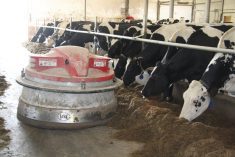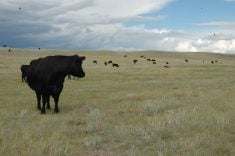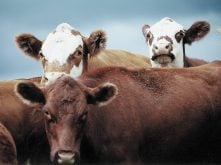CALGARY — Heavy drifts of snow in Alberta ditches, fields and mountains don’t necessarily mean spring water supplies will be ample.
There’s no way to predict how much of this year’s snowfall will seep into the ground or how much will be lost in runoff and evaporation, says soil specialist Al Howard of Alberta Agriculture.
On the Prairies, 50 to 80 percent of moisture in snow can be lost as it melts, he said.
Timely rains vital
The area between the North Saskatchewan and Battle Rivers is the driest in Alberta and timely rains will be needed this spring to ensure good seeding conditions. Howard says soil moisture conditions in the south and west of Highway 2 will be good.
Read Also

New World screwworm not seen as trade threat
Canadian cattle producers shouldn’t be worried about the New World screwworm, which has become a massive concern for ranchers in Mexico and is threatening the southern United States
Alberta Environment says ground water supplies for Edmonton, Whitecourt, Lloydminster, Cold Lake and Peace River region are all below normal; other parts of the province are normal to above normal.
A deep snowpack in many mountain regions of Alberta indicates a higher-than-normal spring runoff, says a report from the environment department.
Conditions like 1982
The heaviest runoff is expected in the central-northwest plains where snowpack conditions are similar to 1982 when moderate flooding occurred around the Battle River, lower Paddle River and headwaters of the Sturgeon River.
Runoff is expected to be normal in the east-central areas.
Mountain snowpack in the south is normal to slightly below average. This affects the Oldman River that flows through the Lethbridge region. The headwaters of the Bow, Red Deer, North Saskatchewan, Athabasca and Smoky Rivers are average for this time of year.















